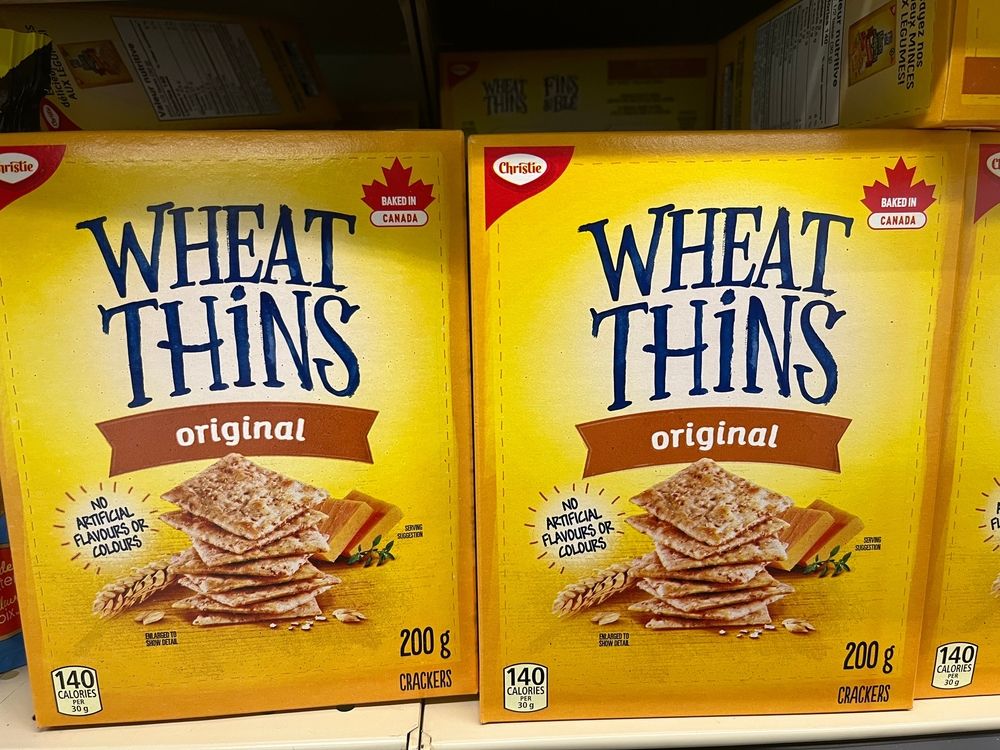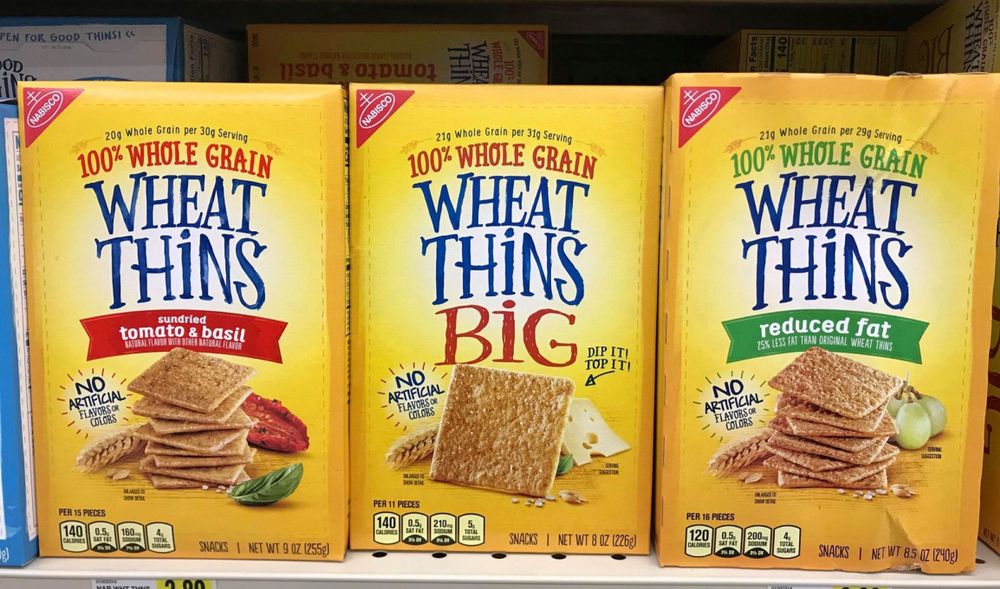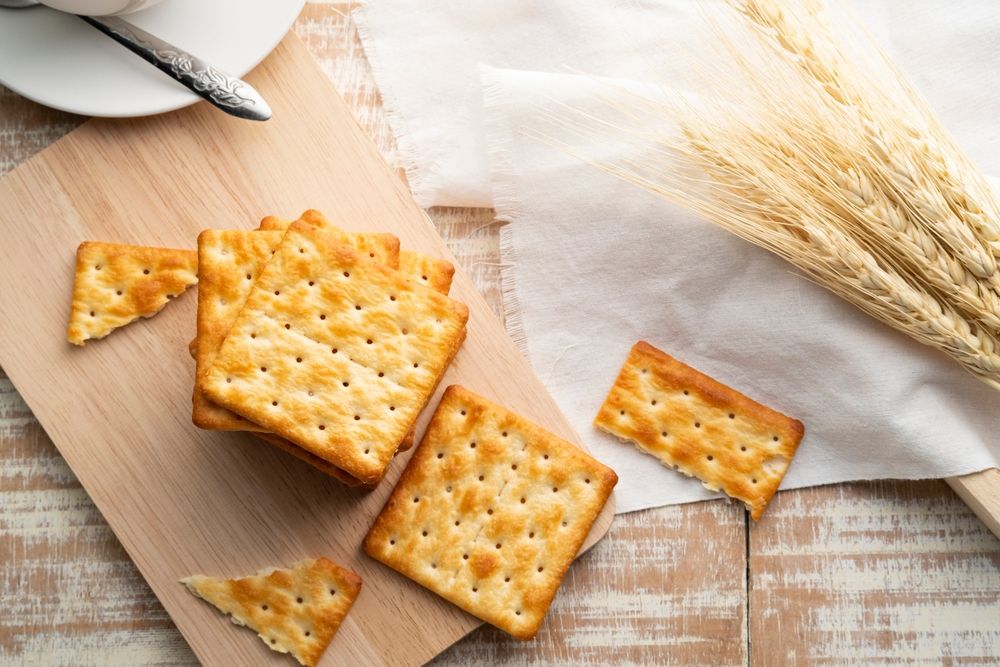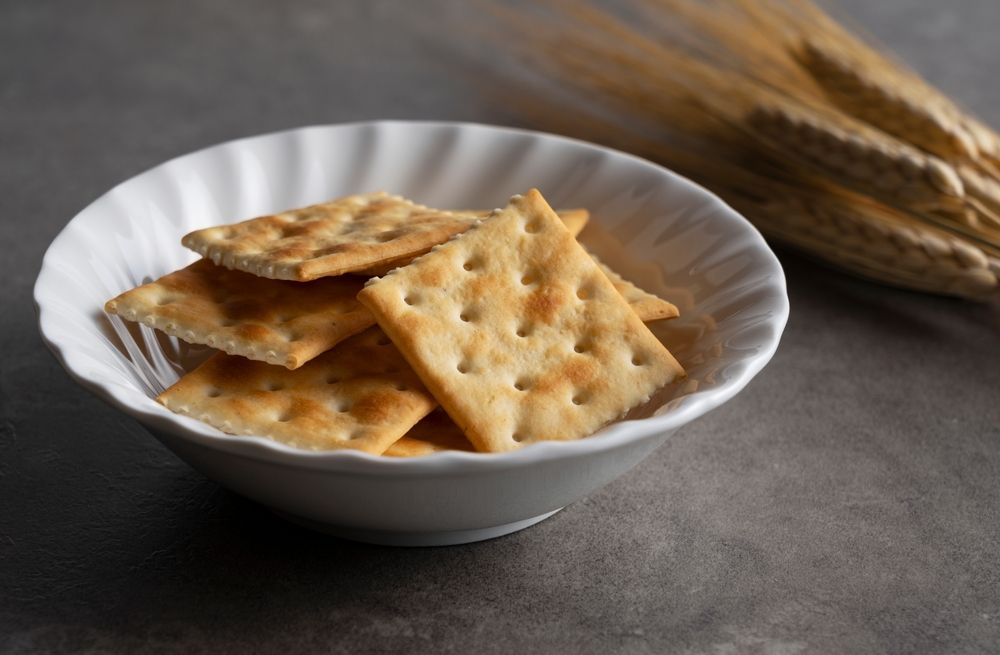
Wheat Thins offer a tempting blend of salty, sweet, and nutty flavors that make them hard to resist. Whether enjoyed on their own, paired with cheese, dipped in spreads, or topped with nut butter, the possibilities are endless! With packaging that promotes 100% whole grains and a name like "Wheat Thins," they certainly sound like a wholesome option. But are Wheat Thins actually healthy?
We’re diving into the ingredients, nutrition facts, and the pros and cons to help you decide if Wheat Thins should earn a place in your shopping cart. Keep reading, and then explore The 15 Healthiest Store-Bought Crackers, According to Dietitians.
What Are Wheat Thins?

Wheat Thins have been a beloved staple in the snack cracker world since 1947. Recognized for their thin, crunchy, square shape, they come in a variety of flavors and sizes to fit any snacking preference:
- Original
- Sundried Tomato & Basil
- Hint of Salt
- Reduced Fat
- Big
Nutritional Profile of Wheat Thins

One serving of 16 Wheat Thins crackers provides:
Nutrition (Per 16-cracker serving):
- Calories: 140
- Fat: 5 g (Saturated Fat: 0 g)
- Sodium: 200 mg
- Carbs: 22 g (Fiber: 3 g, Sugar: 5 g)
- Protein: 2 g
Wheat Thins have a nutritional edge over refined crackers like Saltines or Ritz, as they’re made with 100% whole-grain flour and are a good source of fiber.
Thanks to their thinness, a serving of Wheat Thins usually includes more crackers compared to refined options. However, one drawback is that Wheat Thins contain more added sugar than some refined counterparts.
Wheat Thins Ingredients
From a health perspective, Wheat Thins benefit from a relatively short ingredient list.
Ingredient list for Original Wheat Thins:
- Whole grain wheat flour
- Canola oil
- Sugar
- Cornstarch
- Malt syrup
- Salt
- Refiner's syrup
- Leavening (Calcium Phosphate, Baking Soda)
Wheat Thins score extra points for making whole-grain wheat flour their first and most prominent ingredient. However, they lose some ground for containing three types of added sugars: sugar, malt syrup, and refiner's syrup.
On the plus side, Wheat Thins use canola oil, a monounsaturated fat that’s healthier than the soybean or palm oils often found in crackers like Ritz or Club Crackers.
Health Benefits of Wheat Thins
Wheat Thins come with a few notable health benefits:
Made with Whole Grains
The main ingredient in Wheat Thins is whole-grain wheat flour. When you see "whole" before a grain’s name, it means the flour includes the entire kernel: the bran, germ, and endosperm. This provides more fiber, vitamins, and minerals compared to refined or enriched flour. The U.S. Dietary Guidelines recommend making at least half your grains whole, and swapping refined crackers for a whole-grain option like Wheat Thins is an easy way to do this.
Good Source of Fiber
Each serving of Wheat Thins provides 3 grams of dietary fiber (10% of the daily value), a nutrient that many Americans don’t get enough of. Fiber is linked to multiple health benefits, including improved gut health, better blood sugar regulation, weight maintenance, and reduced risks of heart disease and type 2 diabetes.
Contains Some Protein
Wheat Thins offer a modest amount of protein, with 2 grams per serving. Protein, along with fiber, helps promote fullness and can prevent over-snacking.
Low in Unhealthy Fats
Wheat Thins contain unsaturated fats, the type beneficial for your diet, with zero grams of saturated fat. Limiting saturated fat is recommended for heart health, and Wheat Thins offer a low-fat option without unhealthy fats.
Potential Drawbacks of Wheat Thins
While Wheat Thins have several health benefits, it’s also important to be mindful of some potential downsides.
Contains Added Sugar
Wheat Thins contain 5 grams of sugar per serving, with 4 grams from added sources. This is higher than other cracker options and worth noting, as many Americans consume more sugar than recommended. On average, people consume up to 71 grams of sugar daily, while the American Heart Association advises limiting added sugar to no more than 25 grams for women and 36 grams for men.
Medium Source of Sodium
Another potential concern is the sodium content. A serving of Wheat Thins has 200 milligrams of sodium, placing it in the “medium” sodium category. However, it’s essential to keep an eye on your total daily sodium intake. The Dietary Guidelines recommend adults limit sodium to 2,300 milligrams per day. Since many packaged foods contain sodium, pairing Wheat Thins with cheese or dips can increase your sodium intake significantly, so choosing healthy, low-sodium accompaniments is a smart choice.
Are Wheat Thins Healthy?
Wheat Thins can be a nutritious snack that fits well into a balanced diet. While they’re flavorful, it’s best to stick to one serving at a time. For an extra nutritional boost, try pairing Wheat Thins with nutrient-rich, low-sodium foods that contain no added sugar, such as sliced veggies, fruits, unsalted nuts, nut butter, or Greek yogurt.
Final Thoughts
Just as with fruits and vegetables, it’s beneficial to diversify your grain sources. Rather than relying solely on Wheat Thins for your daily grain intake, aim for a variety of whole grains like popcorn, oats, barley, and quinoa to enjoy a broader range of nutrients.

